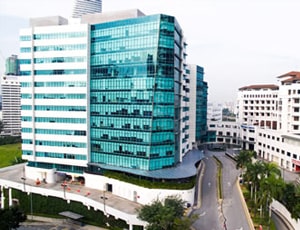VP shunt is a mechanical device, so it will go bad eventually. But its total life differs from patient to patient. Every individual has a different body chemistry, some are more sensitive to foreign objects, while others are more tolerant. So the life of a VP shunt depends on your body chemistry and how receptive your body is to a foreign object. This is the reason why removal period of VP shunt is totally unpredictable. The patients are advised to visit the doctor for follow-ups so that the doctor can check on the device and see when it requires a removal.
The patient may need to lie flat for 24 hours after the shunt in the
The VP shunt procedure is a safe and most common procedure for the treatment of hydrocephalus. But it also involves some complications and risks. Some patients may be advised a VP shunt revision in case of
VP shunt malfunction is a complication that can occur in adults and any other age group. The blockage can take place from tissue, blood cells or by bacteria. Both the ventricular catheter and the distal part of the catheter can be blocked by tissue from the ventricles or choroid plexus.
This type of VT shunt infection is most commonly seen in one to three months after the surgery. Abdominal infection after VP shunt is also common. A person with VT shunt may also develop a generalized infection, which can become serious quickly.

Tel Aviv, Israel
Assuta Medical Center is a leading private hospital in the capital city of Tel Aviv in Israel. Assut...more
![]() Accommodation
Accommodation
![]() Airport Transfer
Airport Transfer
![]() Choice of Meals
Choice of Meals
![]() Interpreter
Interpreter

Kuala Lumpur, Malaysia
History Parkway Pantai Hospital in Kuala Lumpur, Malaysia is operating under the Parkway Pantai gro...more
![]() Accommodation
Accommodation
![]() Airport Transfer
Airport Transfer
![]() Choice of Meals
Choice of Meals
![]() Interpreter
Interpreter

Istanbul, Turkey
Founded in 1999, Medicana Camlica is a specialty hospital of the Medicana Group which is well known ...more
![]() Private Rooms
Private Rooms
![]() Translator
Translator
![]() Nursery / Nanny Services
Nursery / Nanny Services
![]() Airport Pick up
Airport Pick up

Spine & Neurosurgeon
Noida, India
20 Years of experience
USD 36 for video consultation
Q: How long can you live with brain shunt?
A: The shunt tubing may degenerate over a period of time Therefore, every patient must undergo a revision surgery after every five or ten years. Most of the patients are able to well beyond that period.
Q: How long does it take to recover from a VP shunt?
A: It takes around three to four days to recover from the VP shunt surgery. However, a patient is usually discharged after a week of the surgery.
Q: What are the symptoms of a blocked VP shunt?
A: A headache, vomiting, stiffness in the neck, fever, pain in the stomach, and sleeplessness are some of the symptoms of a blocked VP shunt.
Q: What are the symptoms of VP shunt overdrainage?
A: Increased intracranial pressure, difficulty walking, decreases in appetite, incontinence, and headache are some of the symptoms of VP shunt overdrainage.
Q: Can hydrocephalus cause death?
A: If left untreated, hydrocephalus can indeed lead to death. Additionally, it can lead to intellectual, physical, neurological, and visual changes in the affected individual.